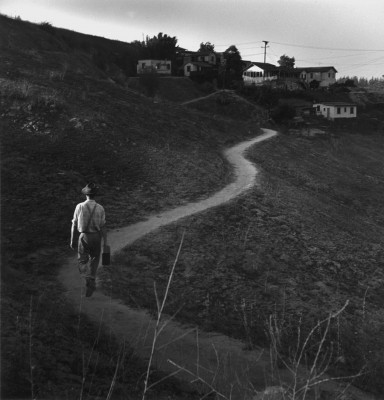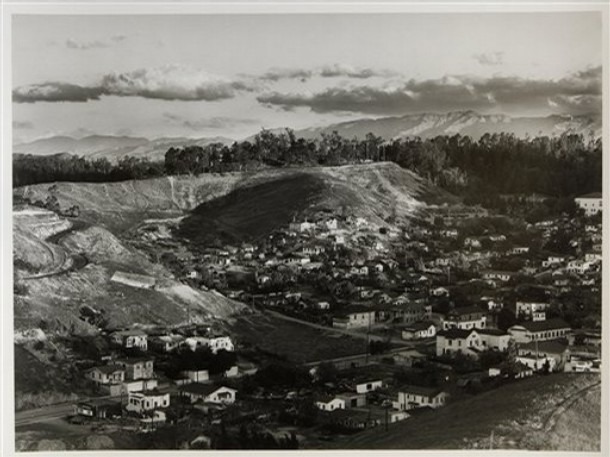During the 1940’s, Chavez Ravine came to the city’s attention as an area ripe for re-development. At the time, it was the home of a well-established, predominantly Mexican-American community. It was poor but pastoral and self-sufficient. Many of its inhabitants grew their own food and raised their own animals. This small, hidden valley was home to several hundred families many of whom had trouble finding other places to live due to housing discrimination.
During the post-World War II housing shortage, the city of L.A. looked to Chavez Ravine as the perfect place to build public housing (rooms that were meant to be rented-out by low-income families). In preparation for the building of this complex (to be known as “Elysian Park Heights”), most of the inhabitants of Chavez Ravine were evicted from their homes. But before construction even began, the political climate in L.A. changed drastically. It was the height of the Red Scare and this plan for public housing were a bit too socialist for L.A.’s public officials including the newly-elected mayor. The planner of this project, Frank Wilkinson, was then called before the House Un-American Activities Committee. His was fired due to his refusal to confirm or deny Communist Party membership.
The project died, and in the meantime, Chavez Ravine was still occupied by a small number of its original inhabitants that refused to leave. In 1958, the city of Los Angeles (wanting to pull in the revenue that would come from having a major baseball franchise) sold the 352 acres of land to the Brooklyn Dodgers. The remaining residents were forced out through the use of condemnation or eminent domain. A handful of residents avoided this and held out until the very end when, in May of 1959, the sheriffs department came in with bulldozers and armed men and physically forced them out.
The story of Chavez Ravine is a complex and interesting one, and I highly recommend that those who are interested in it read more about it. One of the best books on the subject is Don Normark’s Chavez Ravine: A Los Angeles Story. As a young photographer in 1949 he photographed the residents of Chavez Ravine. Years later he found many of the people that he photographed and their memories make up the majority of the book’s text.


